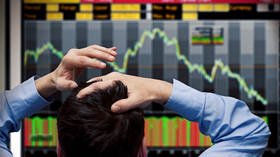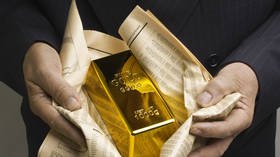‘Something is very wrong with gold’ if Lego outperforms it – Max Keiser
A recent study suggests that iconic Lego toys are a better investment than gold. This signals that “something is very wrong” with the once most precious asset, as well as with the entire global economy, RT’s Keiser Report noted.
“Another sign of [an] economy in collapse [is] the destruction of the price signals which is part of the underlying misallocation of capitals. Bitcoin fixes that, but what used to fix that was gold,” Stacy Herbert, one of the co-hosts of RT’s Keiser Report, said.
“Gold used to be the number one price signal: whenever the price of gold went up, it was signaling to everyone in the economy that […] the economy was out of control,” she explained further. But now, as a study by the Higher School of Economics (HSE) in Russia has found, secondhand Lego plastic toys look more appealing to investors than gold. HSE researchers discovered that the market for secondhand Lego rises in value by 11% annually, which is a faster and better rate of return than gold, bonds, stamps, and wine. Max Keiser believes this is no coincidence.
“11% annually is almost matching money supply growth and getting close to matching the inflation rate. Because it’s free to trade and there’s a robust market for these secondhand Lego products, it’s finding a price that satisfies the market [which] is looking for ways to hedge against the rising inflation and the debasement of the currency,” he explained. Keiser said that gold is no longer attracting monetary premium and there is no legitimate price discovery in it because of the derivatives of central banks and money printing.
“Gold has been negative 3% for over ten years because all the monetary premium is being sucked out [of it] – so people would rather trade Legos than their own gold,” he stressed.
Both Max and Stacy also mused that if the secondhand Lego market gets big enough and the price signal it’s sending gets strong enough to tell people that the monetary situation is out of control, “expect Wall Street to come out with a Lego futures contract” to reign the unexpected asset in.
“For now there’s no futures contract and [people] are out there buying Lego showing that the monetary premium of everything in the system is collapsing in the face of inflation,” they said.
As Legos are mostly owned by children, Max and Stacy expect that if there’s ever a Lego version of a futures exchange (no kidding) where owners could be trading their own Lego “to satisfy their own hedge against inflation” it could be a completely new “meta” future for the market.
In this light, Lego, being owned by actual people, is comparable to Bitcoin, which is owned by individuals holding private keys. And both are very different from gold, which is in the hands of central banks that can – and do – suppress its price signals.
“Something is very wrong with gold,” Keiser concluded.
For more stories on economy & finance visit RT's business section
















